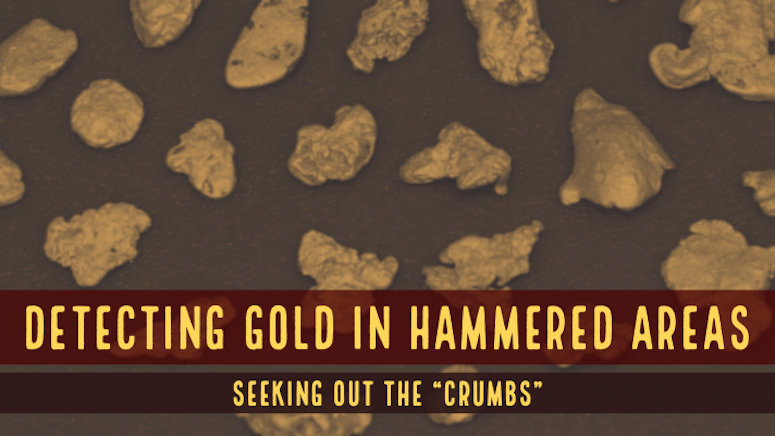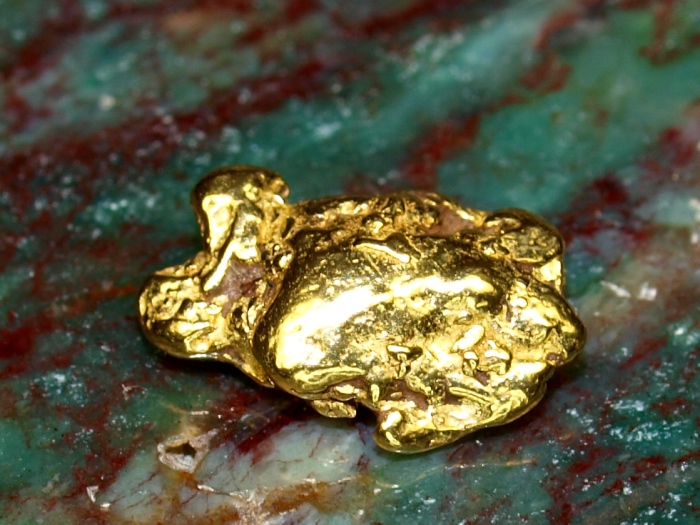
Some of the areas that you come across when you are exploring new prospecting ground just look perfect. You just know there is gold lurking nearby.
If you have been prospecting for any length of time you know what I am talking about. There are some areas that just look gold. There are rock piles left behind from early miners, scattered gravel piles and exposed bedrock. Just good ol’ fashion juicy ground!
Unfortunately here we are well into the 21st century. These spots, as good as they may look, have likely been hunted over and over again by prospectors using a variety of methods. The cream-of-the-crop is now long gone. As good as it looks, you’re going to have to work hard to find gold in these spots.
The Big Nuggets Are Probably Gone
In areas that have been hunted hard, you simply can’t expect to find big nuggets anymore. The first guy with a decent metal detector probably found the bulk of them.
This wasn’t recently either… it probably happened back in the 1980s when the first decent gold detectors started hitting the market. By the 1990s, the first Minelab pulse induction detectors hit the goldfields, and the guys that were lucky enough to be hunting for gold during that time really cleaned up.
Yes, there could be a big, deep nugget lurking in an areas that has been detected hard over the years, but they are few and far between. The simple and sad truth is that a successful nugget detectorist needs to focus their efforts on the small stuff in you want to have consistent success.
Detecting for the “Little Guys”
It’s been said plenty of times before – the big nuggets will find themselves. If you want to consistently find gold these days, you have to focus your attention on the tiniest bits of gold that your detector can find. If you swing over a big nugget then you will definitely hear it, but if you swing wildly and ignore the tiny signals of small gold then you are going to get skunked.
So how does a prospector key in on the small gold?
For my first few years detecting for gold, I didn’t really know what I was doing. I was simply listening for the zip-zip of a solid piece of metal (which rarely turned out to be gold). I was digging a whole lot of square nails out of those tailing piles, but I noticed that all the metal in my pockets at the end of the day was big.
I certainly had no trouble finding big nails, large bullets and musket balls, and all assortments of scrap metal. But I noticed that the small targets like boot tacks and smaller bits were lacking.
And when I was lucky enough to find gold, they were pretty good-sized nuggets, almost always over a gram. It’s always nice to find those bigger nuggets, but I knew that I had to be missing a lot of small stuff. I knew my metal detector was capable of finding much smaller bits because I had friends who were doing it all the time.

What to Listen For…
It took me some time to realize that I couldn’t depend on getting a loud, solid “beep” from my detector. Yes, that is what a big metal target sounds like, but a sub-gram nugget buried under an inch or two of soil doesn’t make a solid sound. It’s much more subtle than that.
To successfully detect for gold, you need to learn to listen for minor disturbances in the threshold. It might be nothing more than a tiny break or “blip” in the threshold. Other times, you might notice that the tone of the threshold changes slightly. It can be so subtle that nearly all beginners miss it. Even some not-so-beginners can miss a lot.
This is why so many experienced detectorists will preach the importance of “learning your detector.” Using a good quality gold detector is important, but understanding the sounds that it makes is even more important. The best detector in the hands of an inexperienced operator will result in very few nuggets.
Capable Detectors
I am not one to constantly advocate that you go out and get the “latest and greatest” detectors to hit the market. If you are just getting into the sport then by all means do your research and get a good newer model detector. Just don’t think for a second that getting the latest model will somehow result in success.
For detecting the smallest bits of gold, there are a few detectors that I recommend.
Fisher Gold Bug 2
Minelab Gold Monster 1000
Minelab Equinox 800
Minelab SDC 2300
That’s certainly not a definitive list. There are lots of older detectors out there that will find small gold just fine too. A 20-year old gold detector can still be deadly in the right persons hands. Again, regardless of the detector you are using, you need to learn it inside and out. Get to know the sounds that it makes.
If you can find an experienced gold hunter to tag along with I highly recommend it. Ask them to point out some of those “small sounds” they get are hearing. I think you will be surprised at just how subtle they are, and you will realize how many potential bits of gold you have been walking over.
Slow. Slow. Slow…. and Low
A final tip for all you hopeful gold detectorists… SLOW. DOWN.
Once you start to understand how small and subtle the sounds of small gold nuggets can really be, you will realize that you need to slow way down and take your time.
If you ever go detecting with an experienced nugget hunter, you might notice that they don’t cover a lot of ground. They might spend all afternoon working a small patch of bedrock, hitting it from all different angles and carefully working around every rock and crevice.
Newbies on the other hands will venture two ridges over, wildly swinging their coil and constantly looking for the next nugget patch. They have visions of happy hunting grounds in their minds, always just a little further away.
At the end of the day, you can guess who is usually the most successful. Take your time and scan the ground with care and precision. This is particularly important when you are detecting in these hard hit spots. You are cleaning up the “crumbs.” Take it slow and keep your coil close to the ground. There’s still gold left to be found, but you’ve gotta work for it.
Next: Detecting for Big Gold Nuggets & Specimens in Tailing Piles

